Bivane Wetland Reserve is a leisure destination for special interest enthusiasts – and also the whole family. The gentle – yet focused – art of fly-fishing is the main activity. Horse-riding, rambling, 4×4 driving, hiking, mountain bicycling, and birding are the other options. Back on the farmhouse porch, you can simply take in the view of big sky country, savouring the deep rural silence and counting sheep.
The reserve has two fully equipped and serviced houses at Pivaansrust and Pivaanspoort, which sleep 8 and 12 people respectively.
Trout fishing can be done in two dams and 23 weirs on Pivaansrust, and there is a spectacular waterfall Pivaanspoort.
Pivaansrust Country House:
The old stone-built homestead and outbuildings are lovingly restored and refurbished. Regular plaaswerf visitors are sheep, chickens, guinea-fowl and horses. It comfortably sleeps eight in three en-suite bedrooms. The focal point inside is the comfortably furnished lounge with its fireplace – at Pivaansrust’s altitude of 1800m it gets chilly in winter and occasionally snows. The Pivaansrust yard has been developed with a view to accommodate the needs of groups.
Pivaanspoort Family Farmhouse:
This rambling family farmhouse has manicured gardens and splendid northern views of the high country and down through the Poort that guides the Bivane River down to the Lowveld. Also an integral part of its setting and atmosphere is an adjoining working farm complete with huge barn, sheep, cows and pigs. The farmhouse makes it affordable and enjoyable to take the whole family along on a fishing trip. It comfortably accommodates 12 people.
The three tastefully decorated bedrooms (one en-suite) are large, as are the common living areas. The kitchen with its old-fashioned coal stove is a particularly popular gathering place and the preferred dining area for most groups. Two large geysers and a wood-burning donkey ensure a reliable supply of hot water. A rondavel next to the house can accommodate a further four people, or more, dormitory-style – ideal for youth groups.
Please Note: All facilities are self-catered and fully serviced.
The Bivane Wetland Reserve uniquely offers exclusivity with affordability – a major advantage over many syndicated fly-fishing venues.
The variety of fly-fishing conditions and challenges are advantages for the fly-fishermen, as is the closeness of most of the fly-fishing water – well-stocked dams, as well as streams and the Bivane River – to the accommodation. This means that non-fishing members of a family can easily join the fishers for a while before continuing a ramble or returning to the homesteads. Either one may be used as a fly-fisher’s base. Fly-fishing below the Pivaanswaterval, the reserve’s most spectacular waterfall, which requires a short drive, can easily be turned into a fun outdoors day for the whole family. Bivane Wetland Reserve’s waters are stocked mainly with rainbow trout, but now and again a skilled fisherman will land the odd brownie. A catch-and-release policy applies.
Bivane Wetland Reserve regularly hosts fly-fishing clinics, presented by resident or invited experts.
Horse-riding in the reserve is another favourite activity with visitors. Riders have access to the entire reserve, regardless of which of the two homesteads they are staying at. The horses are all of the fine South African Boerperd breed and comfortable English saddles are used.
The development of the South African Boerperd started shortly after the arrival of Jan van Riebeeck at the Cape in 1652. The first horses were imported from Java. Persian Arabs, Andalusian and Isabella horses were also imported, followed by Thoroughbred Stallions. These horses became renowned for their endurance, intelligence, hardiness and extreme surefootedness.
The Cape Horse became popular and was established as a breed. Other breeds were subsequently introduced, such as Flemish Stallions, Hackneys, Norfolk Trotters and Cleveland Bays. Because of its unique characteristics, the breed was widely used by the Boer pioneers in their eventful migration into the interior of Southern Africa. The Boerperd also saw action during the Anglo-Boer War (1899 – 1902), and thousands were killed. Many horses were exported to Australia and the East, and they featured in the Crimean War. An Auxiliary Register for the Boerperd was set up in 1905 at the Studbook Register of the Breeders Association of Transvaal. The register was poorly supported and became redundant between 1918 and 1921.
The Boerperd Breeders Association of South Africa was formed in Memel in the Free State in 1973. A constitution was drafted, breed standards were compiled and horses were identified that were genotypically and fenotypically suitable for breeding.
In 1977, the name was changed to the Historiese Boerperd Breeders Association, and in 1980 the breed was officially recognised by the Department of Agriculture and affiliated to the South African Association of Bloodlines. Recognised within the breed were: the Eggo or Cloeteperd, also known as the ‘Eggo’ Boerperd, the Van Niekerk or A2 Horses (after a Mr. Van Niekerk from the nearby Wakkerstroom district), the Odendaal Horses, the Hanche Horses, Steenkamp horses (after a Mr Lang Carel Steenkamp, a direct ancestor of the Alberts family – three generations previous) and the Namib Horses (the latter in the 1990’s).
The Boerperd was accorded the status of a fully recognised and developed indigenous South African breed, and was recognised as such by the Department of Agriculture in 1996. In 1998, the name of the breed was changed to the South African Boerperd – which has been recognised by the Department and the South African Studbook.
Although it is a working farm with sheep, cattle and horses, the logo is “Listen to the Silence”, so one can just enjoy the wild flowers or go for a hike. There are also three crane species on this one site. This is place to visit to rest your weary bones and recharge your batteries.
